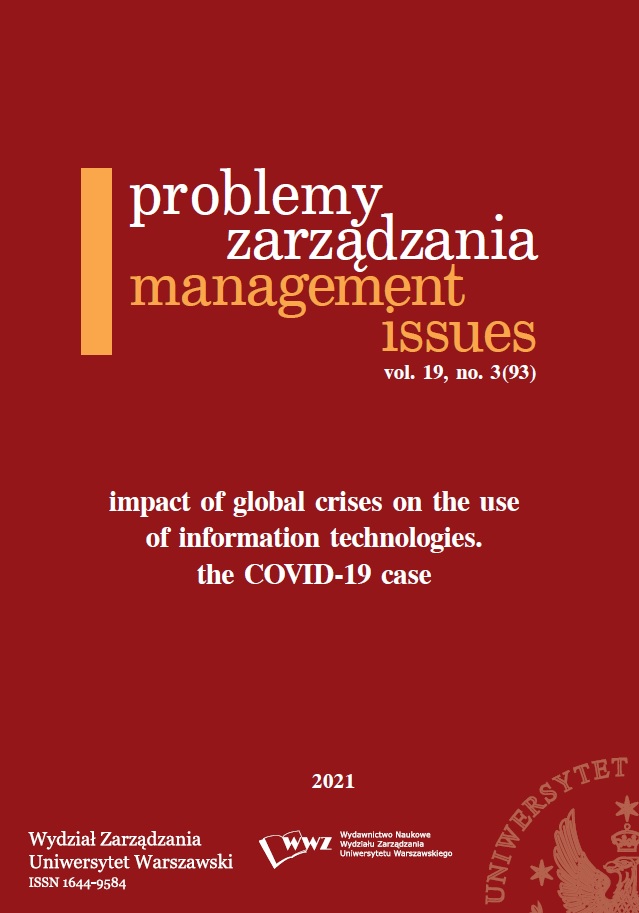Fake News as a Barrier in the Process
of Communicating Information
Fake News as a Barrier in the Process
of Communicating Information
Author(s): Tomasz ParysSubject(s): Economy
Published by: Wydawnictwo Naukowe Wydziału Zarządzania Uniwersytetu Warszawskiego
Keywords: fake news; barriers; communication; disinformation; post-truth
Summary/Abstract: Purpose: The main purpose of this study is to present fake news as a barrier to communication,awareness of its existence and perception from the point of view of individual users. On the basis ofa literature review concerning the phenomenon of fake news, the aspects connected with the functioningof this type of news in the information space were indicated. The results of the research on the influenceof fake news on the process of information transfer and the opinions of users – information recipients– are presented. The results are discussed and summarized in the form of synthetic conclusions. Thedirections of future research related to this topic are also outlined.Design/methodology/approach: Based on the author’s previous experience related to surveying selectedstudent groups, in order to achieve the adopted research goal, the survey questionnaires were distributedusing the CAWI (Computer Associated Web Interview) method.The adopted approach consisted of the following stages: justification of the method of selecting thesample for pilot and main research and informing respondents about the possibility of completing thesurvey; constructing a prototype of a survey concerning the place and role of fake news in the communicationprocess; substantive verification of survey questions on a randomly selected pilot sampleof students; preparing the final form of a quantitative and qualitative survey, testing it and placing iton the servers of the Faculty of Management at the University of Warsaw; conducting surveys amongrandomly selected student groups as well as the analysis and discussion of the results; drawing conclusionsfrom the obtained results.The method of selecting the test sample was random selection – the first 20 people were selectedfrom those responding to the request for verification of the research survey. After revisions of the testsample, specific class groups were randomly selected from among all student groups to administer thesurvey in its targeted form. The sample selection itself was one of purposive sampling, determined inpart by the random selection of pilot and lab groups. The survey was a pilot study and will be repeatedto confirm the results obtained and to refine the conclusions.Findings: On the basis of the survey, the phenomenon of fake news is presented as assessed by therecipients of information in the context of the barrier it poses in the process of its transmission. Theresults are presented in the following scopes: fake news features; the impact of fake news; the perceptionof received messages as potentially fake news; recipients’ reaction to fake news; publishing or postingfake news. Each of the above areas is discussed in the body of the paper. The study is summed up byformulating conclusions and outlining directions for further research in this area.Research limitations/implications: A limitation of this study is the fact that the sample selection useda convenient variant; the students were randomly selected for the study from particular groups and belongedto a group of young people. This limitation, however, was intentional, because almost all participants ofthe study (98%) belonged to the age group of 18–30 years, which is an experienced and active groupof internet users in Poland. Another limitation of the study resulting from the sample selected was thatthe respondents were not diversified socially, professionally or economically. The results of this studycannot be generalized to a larger population. Therefore, further research will be extended to other age,professional and social groups. An attempt will also be made to conduct a study in other geographicallocations based on cooperation with friendly academic centers.Originality/value: The presented material is of high cognitive value. It contains the results of the author’sown research – it presents new content, not previously published in the literature on the subject inquestion. It enriches the literature in that it presents fake news as a barrier occurring in the process ofcommunication and causing disturbances in the process of its transmission. The presented results mayalso constitute a basis for further research – also by other authors – as well as create a platform fora broader discussion on the phenomenon of fake news.
Journal: Problemy Zarządzania
- Issue Year: 19/2021
- Issue No: 3 (93)
- Page Range: 168-186
- Page Count: 19
- Language: English

